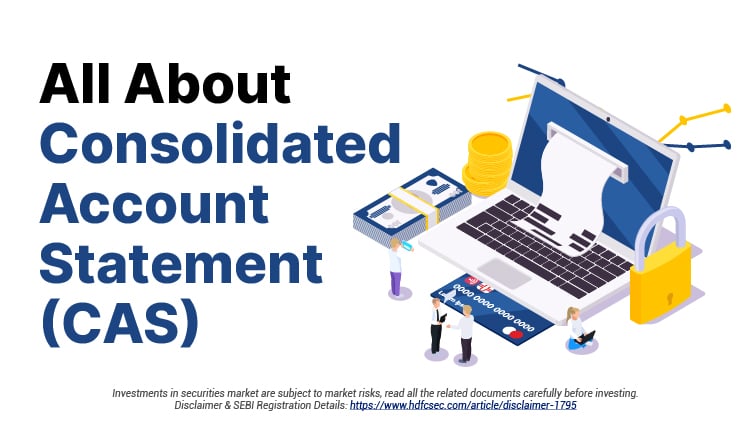All About Consolidated Account Statement (CAS)
Investing in mutual funds has now become easier than ever. You can directly invest in mutual funds through several platforms. But both investing directly and through digital platforms of brokers have only been around for a few years. Therefore, some people might have invested in mutual funds through the websites of each fund house in the past. For them, it is important to keep track of how their portfolios are doing. You may have heard of consolidated account statements (CAS) if you are an investor or are considering entering the stock market. The managers of mutual funds are in charge of regularly updating investors on a fund's performance, and the CAS document is put together to make the whole process for that easier.
Continue reading to learn what a CAS is and the steps to generate it online.
What are Consolidated Account Statements?
Keeping track of performance and transactions is one of the fundamentals of any investment. But tracking each investment independently may require extra work and increase the possibility of errors. To help with that, in 2015, the Securities and Exchange Board of India (SEBI) urged depositories to take the task of compiling investors’ investments based on their Permanent Account Number (PAN) and making investment monitoring easier for investors.
The market regulator's directive led to the creation of the Consolidated Account Statement. Investors can get all the information they require about their mutual fund activities and investment holdings in this one consolidated document. It includes information on each transaction and asset an investor may own across mutual funds and depositories.
As it contains all information about sales, purchases, and other transactions in a mutual fund, it is a crucial document for investors. It provides accurate information for investors on how to monitor the performance of mutual funds.
The CAS is delivered to the investor at the end of the month if there have been any transactions in their Demat account or mutual fund folio. However, the CAS is only sent every six months if an investor doesn't carry out any transactions in a month. The CAS will either be delivered physically to your address or sent to your registered email address.
Steps for Checking CAS Online
You can submit your PAN to any mutual fund registrar and have this statement sent to your mailbox through email. Please note that to use this service, your email address must be listed with your mutual fund manager. This statement will include all the funds associated with your email address. Here are the steps that you can follow to generate a CAS online:
- Visit camsonline.com
- Select Investor Services
- Select CAS – CAMS, Karvy, FT, or SBFS
- Type in both your email address and your PAN
- Type in a password and enter it. This doesn't need to match the password you set up for your mutual fund account.
You will receive mail from camsonline.com if you apply for a CAS using this method. They will have created a password-protected PDF file. When attempting to open the statement, you must input the password. Additionally, remember that everyone can use this facility for free.
What does CAS Comprise?
A Consolidated Account Statement contains information on all transactions carried out by the investor over the course of a month. Among the transactions covered by CAS are the following:
- Acquisition of Units
- Maturity payments and redemption
- Switches
- Systematic transactions such as SIP, SWP, STP, and so forth
- Payments of dividends
- Dividend reinvestment
- Scheme amalgamation
- Allotment of bonus units, and so on
Only financial transactions will be included in CAS. Non-financial transactions such as residence changes, bank data, nomination registration, and so on are not included. PAN and bank account information are also not published for security reasons.
Investor information is another key feature covered in the CAS. Among the investor information contained in CAS are the following:
- Registered email
- Status of nomination registration
- Holding Mode
- ISIN
- KYC Status
- Unique Client Code (UCC) for each portfolio and scheme
- To protect the privacy and confidentiality of the data, the middle digits of the investor's mobile phone number (if provided) are hidden.
Another thing to remember is that CAS only shows the portfolios with transactions in a particular month. This means that if the investor has numerous portfolios, but only a few have had any transactions in the previous month, just those portfolios will be listed in the CAS.
Conclusion
As an investor, you should be aware of your financial situation, investment objectives, risk tolerance, short- and long-term plans, and portfolio diversification, among other things. Online resources or mobile applications help provide this information at your fingertips by delivering real-time market updates, professional guidance, price alerts, and other useful insights. CAS is one such online resource. To keep track of your investments and maximise their potential, make sure you receive the CAS on a regular basis.
Related Posts
Don't miss another Article
Subscribe to our blog for free and get regular updates right into your inbox.
Categories
newsletter
 HSL Mobile App
HSL Mobile App 



